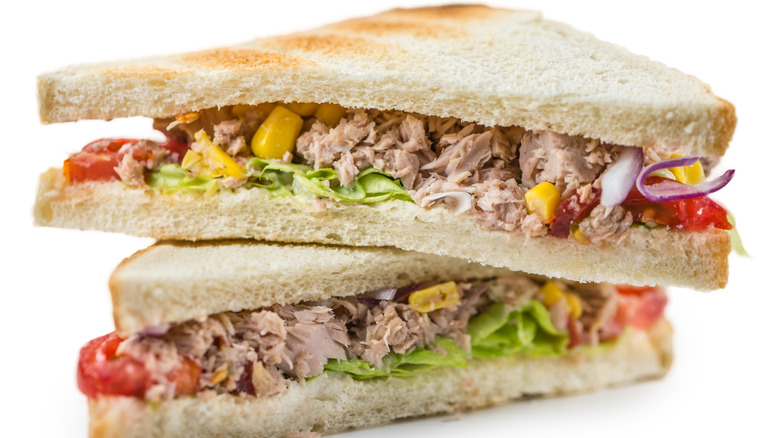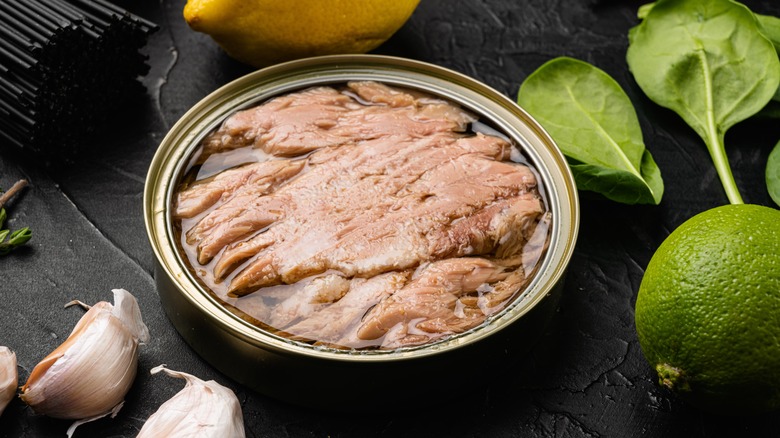When To Use Oil-Packed Tuna Over Water-Packed (And Why It Matters)
If you grew up in the '70s and '80s, you know that canned tuna used to be the butt of jokes. It has a reputation for being a cheap source of protein that tastes and smells, well, like cat food. Tuna sandwiches were included in many school lunches — and not many people liked them. But that was then.
Now, canned tuna has become a gourmet food item, and with good reason. Gourmet canned tuna is silky and rich, with a meaty flavor and very little aroma, per Saveur. You can buy canned tuna packed in water and oil, imported from Italy and France and Spain. It's delicious in salads, sandwiches, and in recipes such as tonnato (not tomato) sauce, a silky mixture that's fabulous atop tomatoes or poached chicken.
But there are differences between water-packed and oil-packed tuna, as well as rules about when to use each canned tuna variety.
Which variety you use depends on your intended uses
When you open a can (or jar) of high-quality tuna, the first thing you'll notice is the aroma (per Saveur). It will not smell fishy, but briny, with a rich, meaty tinge. The tuna also looks different from the finely flaked tuna you're used to. This tuna comes packed in big chunks, with little liquid.
According to The Washington Post, this type of tuna is processed differently. Companies such as Conservas Ortiz clean and trim the fish by hand, before the chunks are packed into cans and topped with olive oil.
Tuna packed in water is processed the same way. Epicurious editor Anna Hezel told the Post that she uses the two types differently. If she's making a salad or sandwich and adding fat, such as mayonnaise, she'll use water-packed tuna. But if the tuna is going to be eaten straight or in a salad with an olive oil dressing, she chooses oil-packed tuna. In short, the way you plan to use the tuna should dictate the type of canned or jarred tuna you buy.
Nutritional differences between the two
Both water-packed and oil-packed tuna are high in protein, according to Healthline. But tuna packed in water has twice as much cholesterol as tuna packed in oil. Oil-packed tuna also contains more sodium. It packs about 472 milligrams per four-ounce (1/2 cup) serving, while water-packed tuna has about 280 milligrams.
According to Livestrong, there are other differences in the nutrition between the types of canned tuna, too. Water-packed tuna has roughly three times as many DHA omega-3 fats as oil-packed tuna that's been drained; those oil-soluble nutrients go right out of the can along with the oil when you drain it. (They stay in the tuna in the water-packed version.)
Livestrong adds that oil-packed tuna contains more vitamin D and selenium. Oil-packed tuna also has more calories, with 145 calories for every 1/2 cup, compared to 66 calories for the same amount of water-packed tuna.


